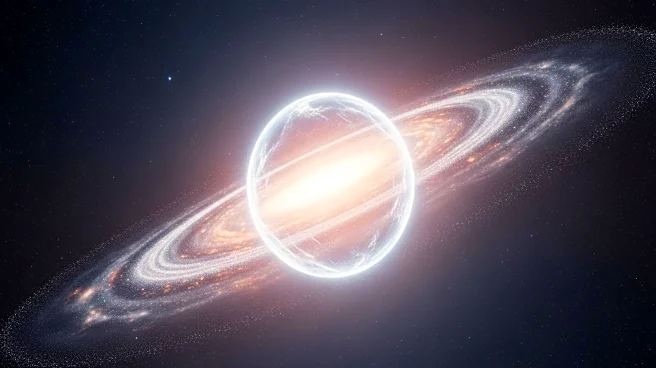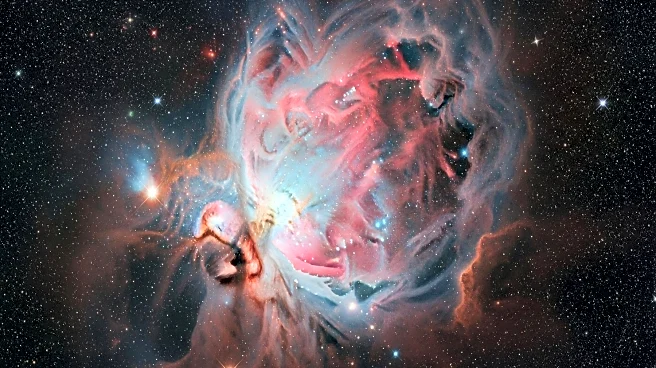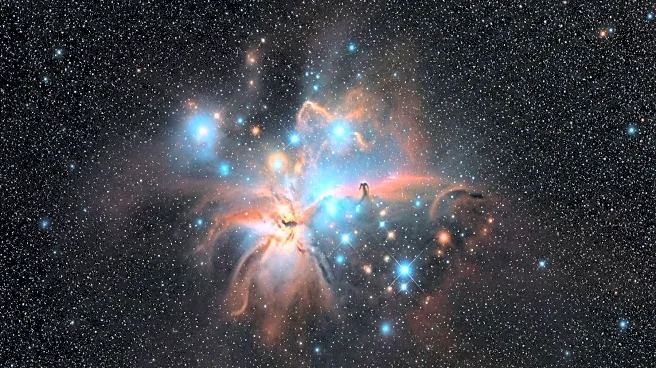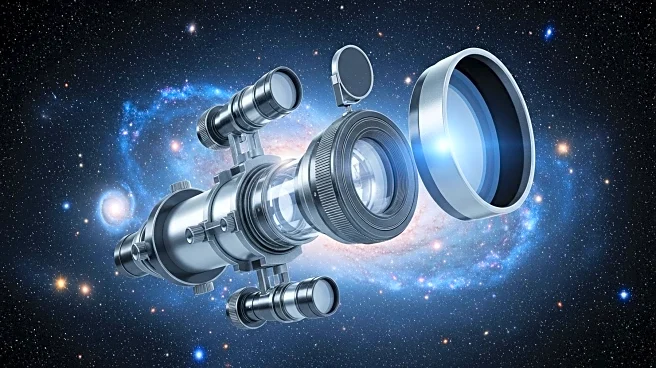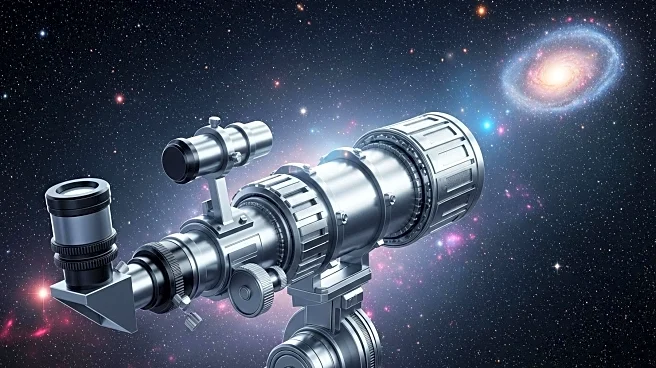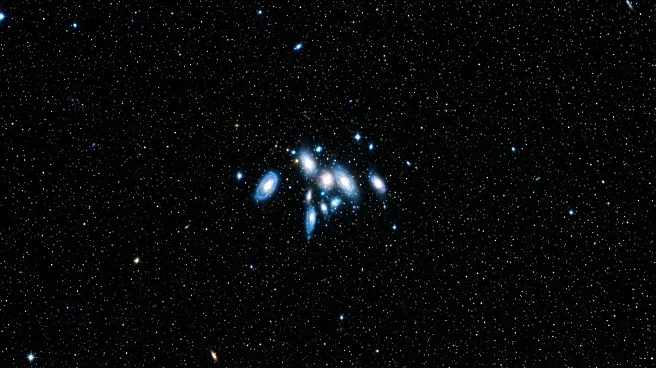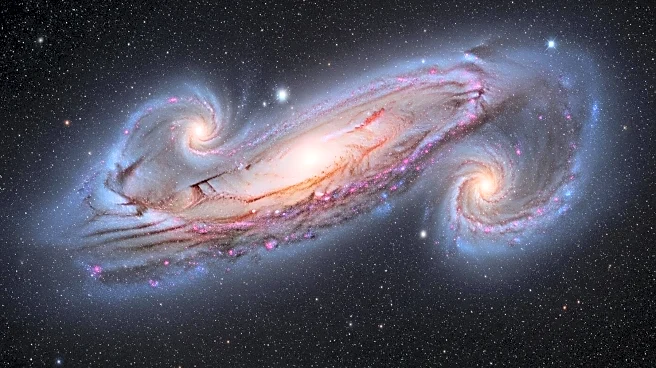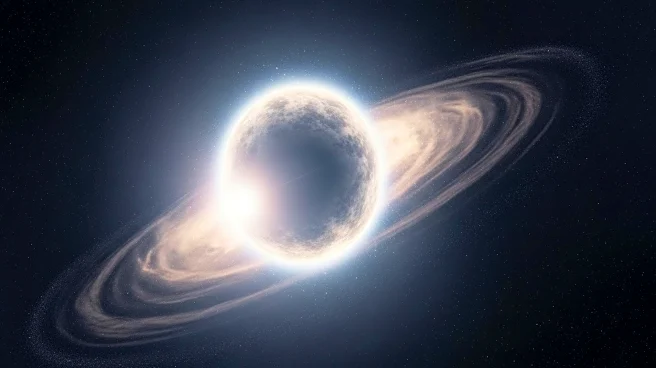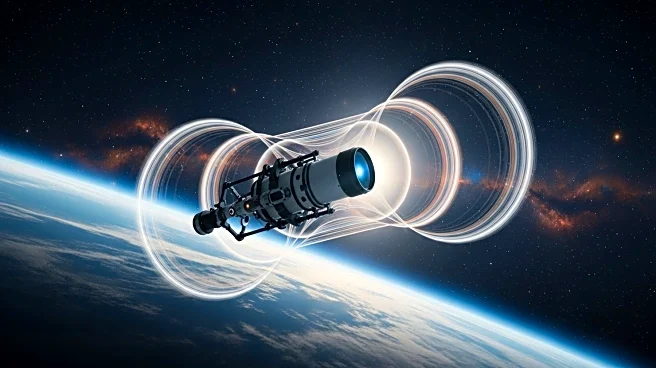What's Happening?
A team of astronomers led by Alexander Ji from the University of Chicago has identified a star, SDSS J0715-7334, with an exceptionally low concentration of metals, suggesting it may be one of the most 'pristine' stars ever discovered. This star, located in the halo of the Large Magellanic Cloud, is believed to be a descendant of the universe's first stars, which were primarily composed of hydrogen and helium. The discovery was made using data from the Sloan Digital Sky Survey and further observations with the Magellan telescope in Chile. The star's low metallicity and carbon levels set it apart from other early-generation stars, providing new insights into the conditions of the early universe.
Why It's Important?
The discovery of SDSS J0715-7334 offers a rare glimpse into the universe's formative years, potentially altering our understanding of stellar evolution and the chemical composition of early stars. By studying such 'pristine' stars, scientists can better understand the processes that led to the formation of subsequent generations of stars and galaxies. This research could also inform models of cosmic evolution and the distribution of elements in the universe, impacting fields such as cosmology and astrophysics.
What's Next?
Further research is needed to explore why SDSS J0715-7334 has such low carbon levels compared to other metal-poor stars. This could involve searching for more primordial stars to understand the environmental factors affecting their formation. The findings may prompt astronomers to re-evaluate existing models of star formation and the early universe, potentially leading to new theories about the conditions that prevailed shortly after the Big Bang.

